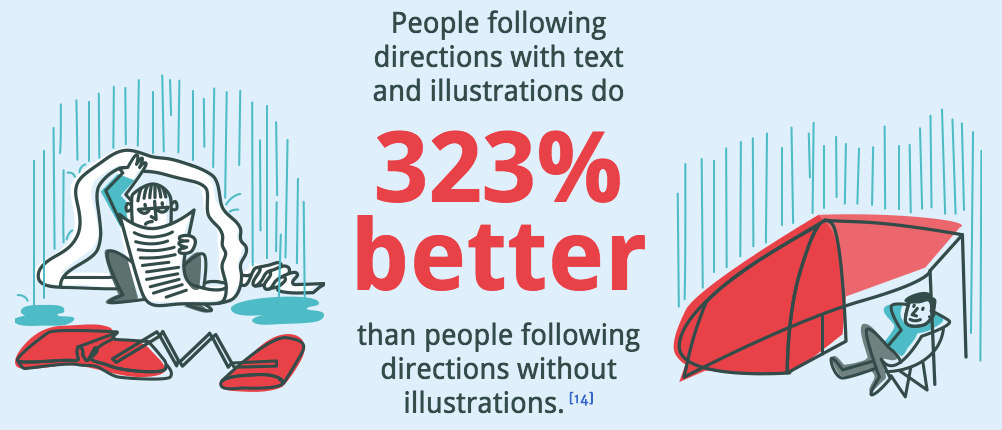In this post, I explain the most vital components of infographic SEO to ensure yours gets proper visibility in the SERPs. This is important to know because Google can’t “read” images like it can text-based content such as a blog post. Start with keyword research You won’t be able to take advantage of keywords in the actual body of an infographic, but there are a few areas where you can insert keywords. A quick search on the Google Keyword Planner shows me that “productivity hacks” is low competition, which is good. This is the text alternative of an image that lets someone know what an image contains in the event that it doesn’t load properly. Research from John Lincoln and Brian Dean found that this is the sweet spot and considered as part of URL keyword best practices (at least for the time being). And there’s one specific hack I would like to point out in regards to infographic SEO. Load time Back in 2010, Google announced that page speed was a ranking factor. Content that loads quickly will get preference. The main thing you have to work around is the fact that an infographic is an image and therefore Google can’t “read” it like it can regular text-based content.
Infographics are amazing!
Besides being one of the best ways to explain a complicated topic with ease, they make information come alive.
Research found,
people following directions with text and illustrations do 323 percent better than people following directions without illustrations.

And the concept of relaying information through visuals is nothing new.
If you think about it, cave paintings and hieroglyphics dating back to 30,000 BC accomplished the same thing.
They were far less sophisticated but demonstrate just how hard-wired we are when it comes to visual information.
So it’s easy to see why infographics have become so ingrained in content marketing.
Unbounce even went so far as to say “infographics are the most powerful tool in your content marketing arsenal.”

But here’s the thing.
Doing SEO for an infographic demands a slightly different approach than the one you would use for a conventional blog post.
In this post, I explain the most vital components of infographic SEO to ensure yours gets proper visibility in the SERPs.
The biggest hurdle
Let me start by saying infographics are technically just images.
They are typically saved in image formats such as JPEG, PNG, GIF, etc.

Of course, they’re much more robust and contain far more information than a regular image, but that’s how Google views them.
This is important to know because Google can’t “read” images like it can text-based content such as a blog post.
Fortunately, there are several other elements that you can optimize.
Start with keyword research
You won’t be able to take advantage of keywords in the actual body of an infographic, but there are a few areas where you can insert keywords.
That’s why you’ll still want to do some keyword research to identify a primary keyword phrase as well as a couple of secondary phrases to target.
Let’s say I was planning on creating an infographic about productivity hacks.
A quick search on the Google Keyword Planner shows me that “productivity hacks” is low competition, which is good.

But I could still probably make it work, especially if I added “infographic” to the end of “productivity hacks.”
In terms of secondary keywords, there are a few possibilities.

The bottom line here is to perform keyword research like you would for any other type of content.
The only difference is how you go about inserting those keywords.
File name
Selecting the right file name is vital.
This is one of the main factors that Google will analyze to determine what your infographic content is about.
You need to get it right.
I shouldn’t even have to say this, but you’ll obviously want to stay away from anything generic like Image001.png.
This tells Google absolutely nothing and is going to be a strike against your infographic SEO.
A better choice would be something like productivity-hacks-infographic.png.
It’s short and sweet and lets Google know exactly what your content is about.
Just make sure you’re not doing any keyword stuffing, using the same phrase multiple times or anything else that’s spammy.
But you already know that.
Alt text
Equally important is your alt text.
This is the text alternative of an image that lets someone know what an image contains in the event that it doesn’t load properly.
Screen readers for the blind and visually impaired will…

COMMENTS